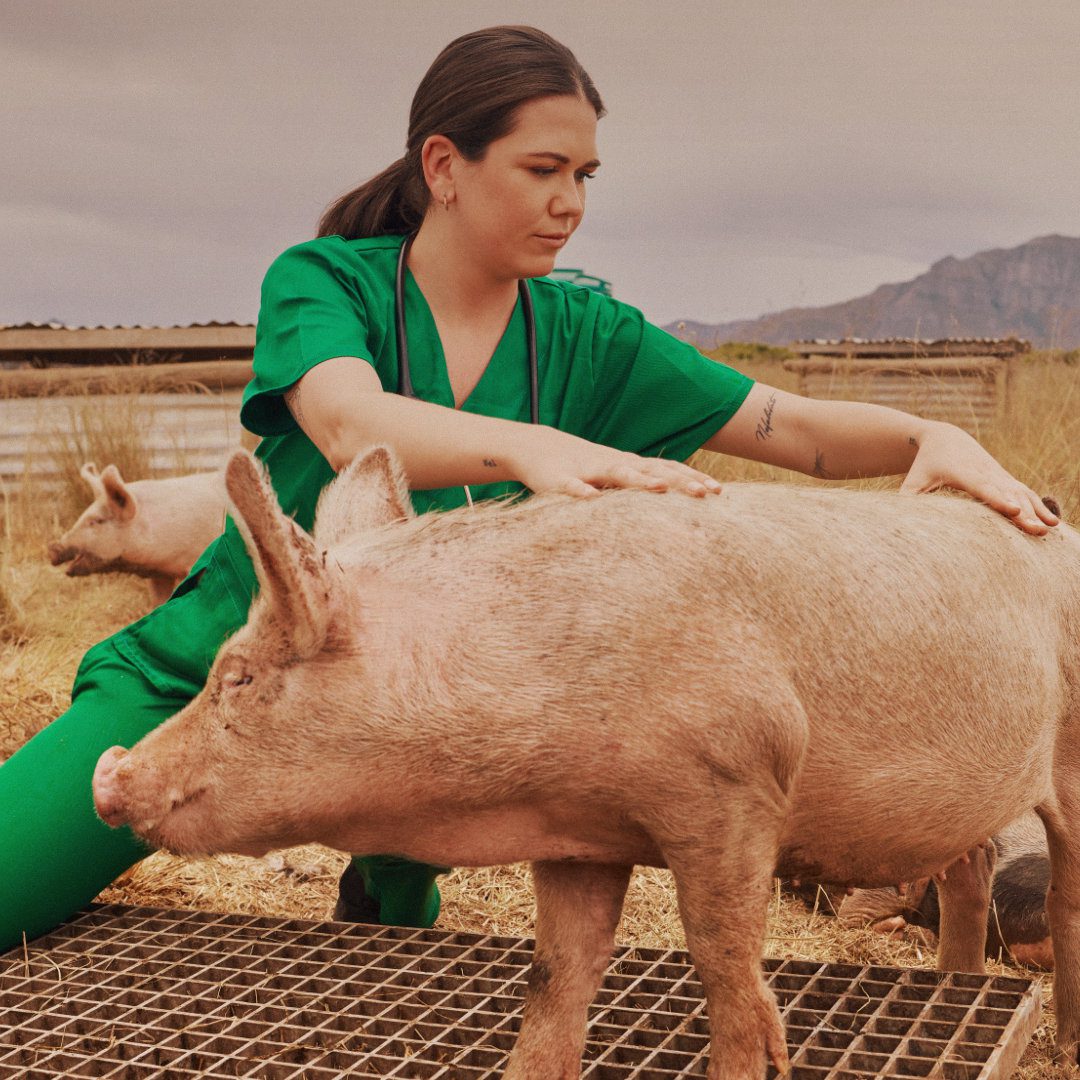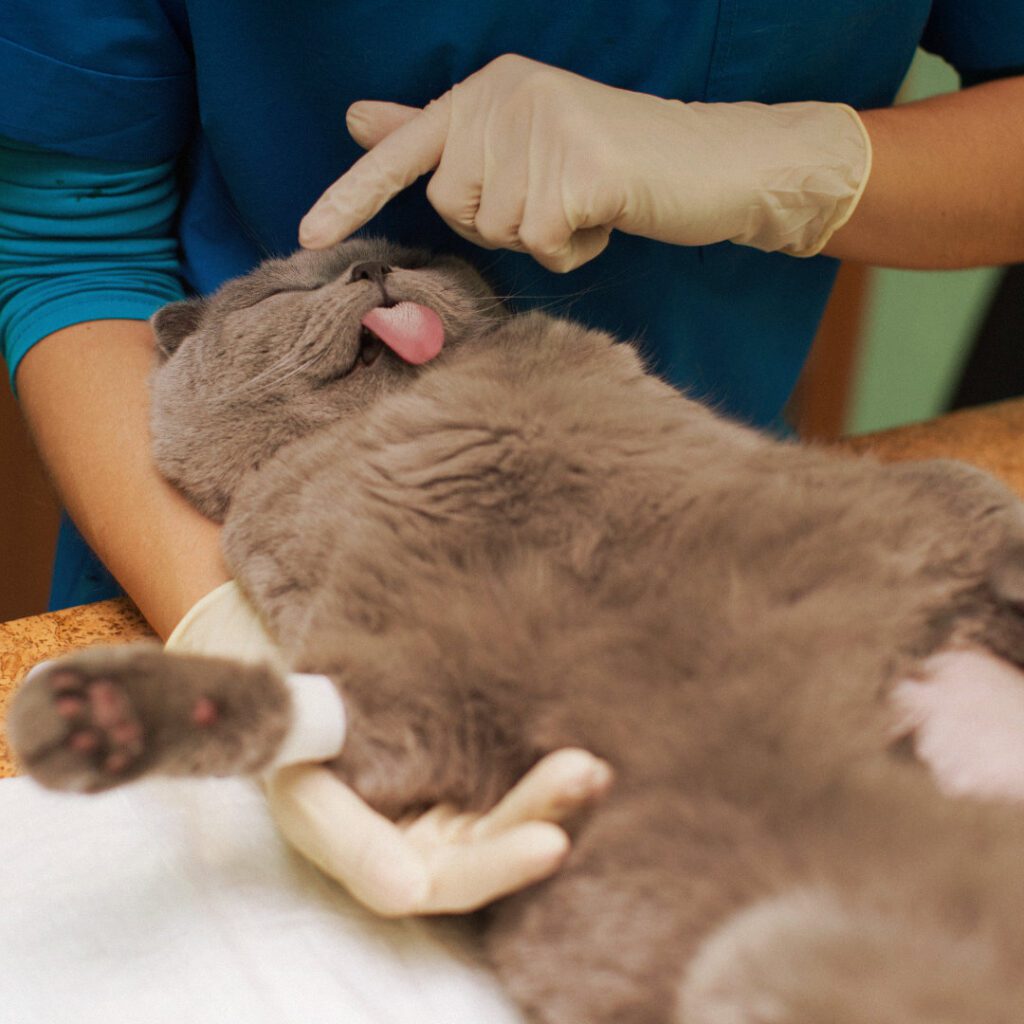November 20, 2025 | Vet Student | Veterinary
Veterinary CPD webinar
Large Animal Cardiology Basics: Key Insights in Large Animal Cardiology
Highlights from Dr. Catherine Georges’ Webinar.
Dr. Catherine Georges, DVM, DACVIM (Cardiology)
Veterinary cardiology specialist, Quebec, Canada
Large animal cardiology is a fascinating yet often underrepresented area of veterinary medicine.
In a recent webinar, Dr. Catherine Georges, a board-certified veterinary cardiologist fresh from her residency at the University of Florida, shared a concise, practical overview of important cardiovascular conditions in horses, cattle, camelids, goats, sheep, and pigs, all relevant for both clinical practice and NAVLE® preparation.
If you missed the live session, you can register below to access the full recording and watch at your convenience.

Access our pre-recorded Veterinary Webinars
This blog post summarises the key takeaways from her session, emphasising clinically relevant signs, diagnostics, and management principles.
Equine Cardiology: Common and Critical Conditions
Aortic Rupture
Aortic rupture most commonly affects older male horses, especially breeding stallions. Clinical signs are often absent until sudden collapse and death, making post-mortem diagnosis common.
Friesian horses are believed to have a genetic predisposition and tend to develop a chronic dissection form rather than acute rupture. Echocardiography may reveal aortic wall dissection and can be used for monitoring.
Key takeaway: Consider screening predisposed breeds and be aware of the risk of sudden death even in apparently healthy stallions.
Atrial Fibrillation
Atrial fibrillation (AF) is the most common performance-limiting arrhythmia in horses, particularly in larger breeds. It is often discovered incidentally, but in performance horses, it can cause exercise intolerance. Collapsing episodes are rare.
Treatment options include:
- Medical cardioversion using quinidine, though it carries potential side effects.
- Electrical cardioversion (TVEC) at specialised centres, where the horse is anaesthetised and electrodes are used to restore normal sinus rhythm.
AF in horses presents as an irregular rhythm on ECG with no visible P waves and a fibrillating baseline.
Key takeaway: Not all horses with AF require treatment, but cardioversion is advisable in active or performance horses.
Valvular Disease
Valvular degeneration in horses most commonly affects the aortic valve, followed by the mitral valve. It typically occurs in older horses and produces a long, diastolic murmur that’s relatively easy to detect due to the slow equine heart rate.
Potential complications include:
- Development of left-sided congestive heart failure (CHF)
- Increased risk of ventricular arrhythmias
Key takeaway: Regular auscultation and echocardiographic follow-up are essential in older horses with murmurs to assess progression and clinical impact.
Ionophore Toxicity
Ionophores (e.g., monensin, lasalocid) are antibiotic feed additives used to control coccidiosis in ruminants. Horses are extremely sensitive to these compounds, leading to cardiac and skeletal muscle necrosis even at low doses.
Clinical signs are often nonspecific — including weakness, sweating, inappetence, and ataxia — and many cases are only diagnosed post-mortem.
There is no antidote; treatment is largely supportive.
Key takeaway: Prevent exposure by carefully managing feed sources. Horses should never be given feed formulated for ruminants.
Bovine Cardiology: From Arrhythmias to Hardware Disease
Atrial Fibrillation
AF is also the most common arrhythmia in cattle, typically secondary to systemic illness (e.g., metabolic disease, gastrointestinal disorders). Treating the underlying condition often results in spontaneous reversion to sinus rhythm.
Pharmacologic conversion using quinidine has been reported but is rarely necessary.
Key takeaway: Focus on identifying and managing the primary disease rather than the arrhythmia itself.
Traumatic Pericarditis (Hardware Disease)
This condition results from penetration of a metallic foreign body through the reticulum and diaphragm into the pericardium, leading to fibrinous pericarditis.
Risk factors include:
- Late gestation (due to uterine pressure)
- Parturition (due to strong contractions)
Prevention: Placing a magnet in the reticulum can reduce risk.
Clinical signs include decreased milk yield, weight loss, and pain in the cranial thorax.
Key takeaway: Early recognition and prevention are critical — once pericarditis develops, the prognosis is guarded to poor.
Infective Endocarditis
In cattle, tricuspid valve involvement is most common, usually secondary to chronic bacteremia.
Common pathogens include Trueperella (Arcanobacterium) pyogenes and Streptococcus spp.
Affected animals may develop right-sided CHF, with signs such as jugular distension and ventral oedema.
Key takeaway: Investigate persistent bacteremia sources, such as metritis or abscesses, when endocarditis is suspected.
High Mountain Disease
This altitude-associated pulmonary hypertension affects cattle raised at high elevation. It is moderately heritable, and young calves (6–8 months) are most at risk.
Pathophysiology:
Low oxygen tension → pulmonary vasoconstriction → increased vascular resistance → right-sided heart failure.
Clinical signs: Brisket oedema, jugular distension, ascites, and pleural effusion.
Management: Move animals to a lower altitude, use diuretics if needed, and selectively breed for resistance.
Key takeaway: Prevention through genetic selection and environmental management remains the most effective control strategy.
Cardiac Disorders in Camelids, Goats, Sheep, and Pigs
Camelids (Alpacas and Llamas)
Congenital heart defects occur in approximately 3–4% of South American camelids.
The most common is ventricular septal defect (VSD), though complex anomalies such as persistent truncus arteriosus and transposition of the great arteries are also reported.
Clinical signs may include respiratory distress and left-sided CHF.
Diagnosis is via echocardiography, often revealing left-to-right shunting and cardiomegaly.
Key takeaway: Echocardiography is invaluable in diagnosing congenital defects, which can mimic respiratory disease in camelids.
Small Ruminants (Goats and Sheep)
Ionophore toxicity can also affect these species, though they are less sensitive than horses. Clinical manifestations are similar — muscle necrosis, CHF, and sudden death.
Atherosclerosis has been observed in goats, sometimes used as models for human cardiovascular research. Lesions commonly affect the aorta, coronary, and uterine arteries, often linked to oxidised fat intake or vitamin E/selenium deficiency.
Key takeaway: Monitor nutritional balance carefully in small ruminant herds to prevent cardiac pathology.
Swine
Mulberry Heart Disease is a classic nutritional myopathy seen in fast-growing nursery pigs, caused by vitamin E and selenium deficiency.
Lesions give the myocardium a characteristic mulberry appearance due to haemorrhage and necrosis.
Clinical presentation is often sudden death due to arrhythmia, and diagnosis is confirmed post-mortem.
Infective Endocarditis in pigs is most often due to Streptococcus suis or Erysipelothrix rhusiopathiae, with the mitral valve being the most commonly affected.
Key takeaway: Nutritional management and biosecurity are key in preventing cardiac morbidity in swine herds.
Final Thoughts
Dr. Catherine Georges’ session underscored how cardiac disease in large animals often presents with nonspecific signs, making clinical suspicion and diagnostic imaging essential for accurate diagnosis. From equine aortic rupture to bovine pericarditis and porcine cardiomyopathy, these conditions emphasise the importance of a systematic approach to cardiovascular evaluation across species.
For veterinarians and students preparing for the NAVLE® or seeking to deepen their understanding of large animal cardiology, this overview highlights the value of recognising species-specific presentations while maintaining strong general diagnostic principles.
If you’re looking to move roles after graduation or if you’re looking for a role once you graduate our team can help
You can call us on 01423 813453 or email us at [email protected]
View all our Veterinary Jobs

Next Up: Veterinary CPD webinar
Feline Cardiology Basics: Understanding Antimicrobial Medications for Veterinary Students
Antimicrobial use is one of the most important and often misunderstood topics in small animal medicine.
In a recent webinar presented by Dr. Sarah Peters, a Las Vegas-based small animal veterinarian, attendees were guided through the fundamentals of antibacterial and antifungal medications, including practical applications, NAVLE® exam tips, and real-world prescribing considerations.

Talk to a specialist
Chris Ellerker
Divisional Director – Dentistry and Locum Vet Divisions
I have over 12 years of recruitment experience, working my way up from Candidate Resourcer, Recruitment Consultant, Business Manager, to Divisional Director. I manage/run our Dentistry and Locum Vet teams here at Prospect Health. I thoroughly enjoy finding candidates a rewarding position that meets their expectations and supporting them through the process of registration/compliance (the fun bit), as well as throughout their placement/booking…
November 20, 2025 | Vet Student | Veterinary


